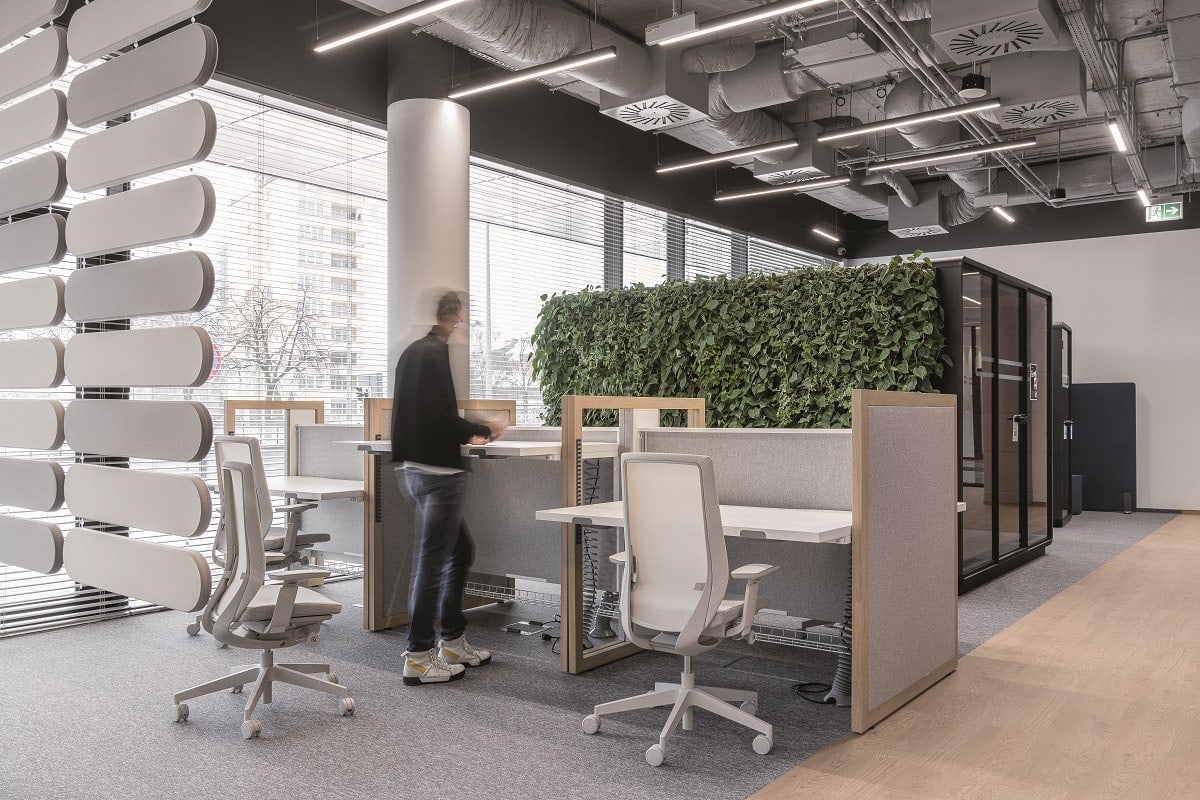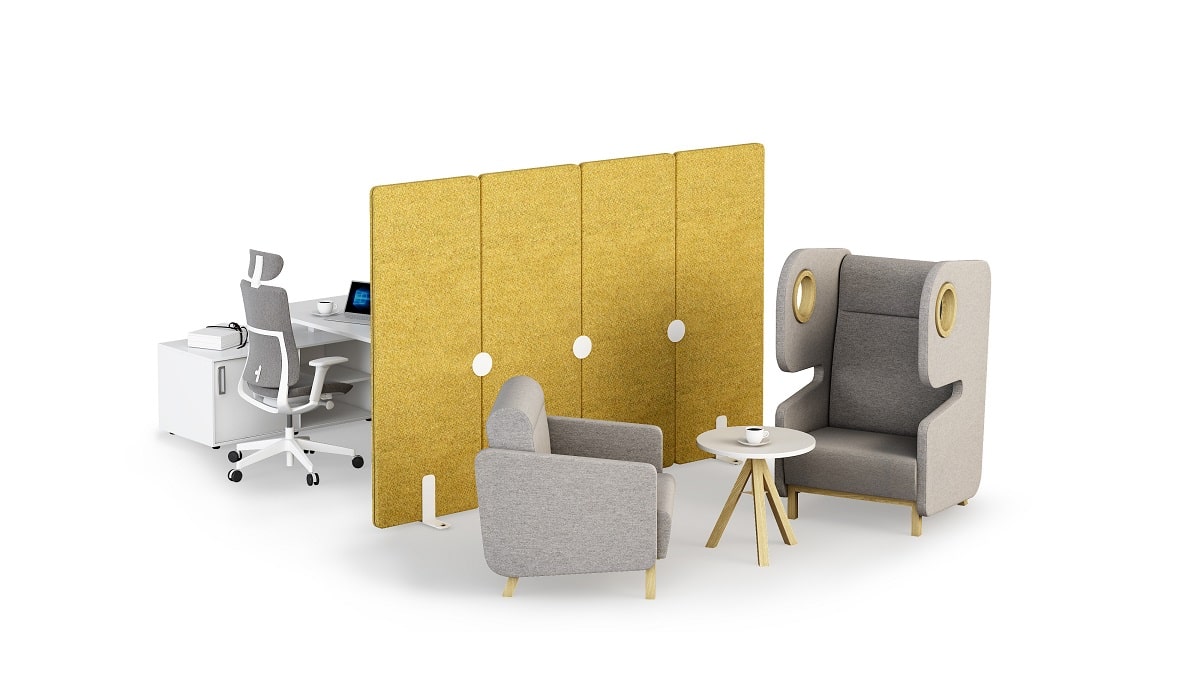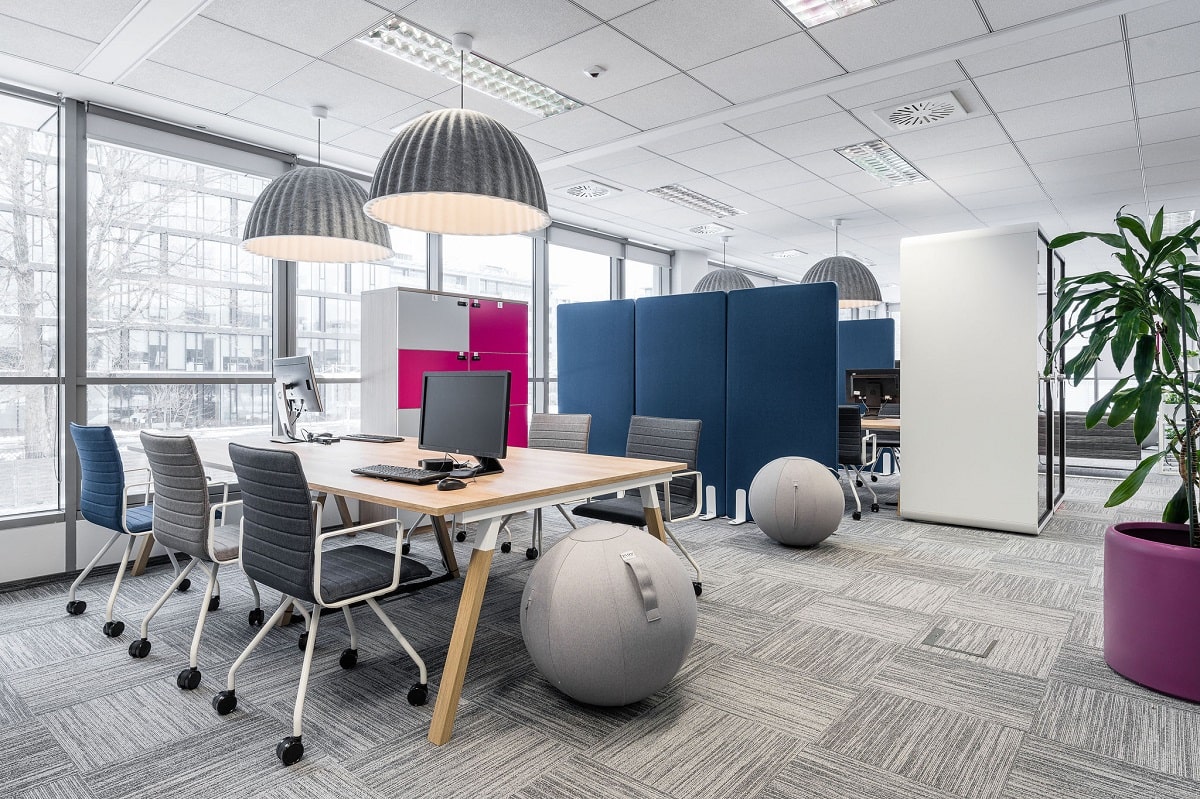Why it’s worth to introduce hot desking in the office? And how to do it well?

After the pandemic, it became apparent that in many companies it was not possible to return to work permanently from the office. Employees – while they appreciate the opportunity for interaction that office space provides – want to be able to choose where they perform their duties. The rise in popularity of hybrid working has led many businesses to look for solutions to improve the working experience and reduce the cost of renting premises. The idea of sharing desks, known as hot desking, has become popular. It involves abandoning the allocation of permanent office seats in favour of sharing them on a rotational basis. In theory, this sounds like a great idea, but will such a solution always work for a company? The article looks at the benefits and challenges of implementing this working model. We will also suggest how to effectively introduce hot desking so that both employers and employees are happy with the results.
Hot desking – why is the idea of desk sharing gaining popularity?
Hot desking is a concept that originated in the US in the 1980s and is now gaining popularity, especially in the context of flexible hybrid offices. The main reason for this phenomenon is the desire to optimise the use of office space and adapt to the changing needs of the labour market.
At the height of interest in remote working, the introduction of rotating desks allows for better management of office spaces, as not all employees are present every day at the company. The hybrid working model means that employees do not need to be assigned a workspace to carry out their professional duties. As a result, companies can save on the costs associated with renting and maintaining large office spaces. At the same time, they provide employees with greater freedom in choosing where to carry out particular tasks. Sharing desks can also lead to better inter-team collaboration and bonding between employees, who, through rotation, have the chance to get to know their colleagues from other departments better. For this reason, the hot desk is increasingly seen as an important part of the future of flexible and hybrid offices.
What are the advantages of hot desks?
With the classic approach to office work, often up to half of the open-plan desks remain unused. Employees are in boardroom meetings, on business trips, sick leave or holidays, or are performing duties from home. The concept of rotating workspaces is an important part of activity-based working (ABW), as it allows for the introduction of a variety of task locations, so that everyone can work in the way that suits them. Hot desking provides space for employees to work whenever they need it.
Cost and space savings
The introduction of hot desking allows for better use of office space and a reduction in rental and maintenance costs. Rotational workspaces are best suited to companies that combine on-site and remote working. In such organisations, there is no need to match the number of desks to the number of staff employed. It is worth noting that renting office space is a significant part of a company’s budget. By optimising jobs, organisations can invest the money saved in other important aspects of the business or offer better employment conditions for professionals.
Improving creativity and productivity
The implementation of so-called ‘hot desks’ also has a positive impact on employee efficiency and stimulates creativity. The system of rotating workspaces provides opportunities for spontaneous discussions, brainstorming and even faster problem-solving and innovative solutions. Hot desking fosters the exchange of information between staff from different departments and thus allows for new insights and ideas. At the same time, it is worth bearing in mind that for conceptual work, employees need a dedicated space in which calm prevails. Soniq mobile acoustic walls can be successfully used for this task. Thanks to the rollers mounted in the stabilising feet, they easily keep up with the dynamics of office work.

Adapting the number of workstations to changing needs
Hot desking in the office is a modern approach to organising workspace that involves flexibly adapting the number of workstations to changing needs. Rather than allocating fixed desks to employees, the hot desking principle implies that workstations are available on the basis of occupying those vacant at any given time. Hot desks allow offices to quickly adapt to growing or shrinking numbers of company employees or new projects. This is extremely important in the dynamic modern business world.
Tidiness in the workplace
Looking at it from another perspective, by sharing desks, employees manage their time better and keep their workstations tidy. On their assigned desks, in addition to documents, some people also place photo frames, memorabilia or other items that are not related to their daily duties. Reducing the number of personal items on the desktop counteracts distractions and translates into better employee productivity.
Better integration of staff from different departments
Especially in large corporations, it happens that people work for several years in the same company and have not even exchanged a word with those outside their team. Hot desking improves the exchange of information within the different departments of the company, as each day an employee sits next to someone else. This arrangement also influences skills development, as you can take a seat next to an expert and get help with or guidance on a particular project.
Challenges of the hot desking concept in the office
The hot desking model has advantages and disadvantages and therefore will not always be the right solution for a company. While it can help keep the office tidy, optimise rental costs and provide better flexibility in terms of choosing where to perform duties, it also comes with different challenges. Usually, the younger generations have no problem adjusting to the new way of working, but it can come with great difficulty for the older generations, as they prefer to have fixed places to carry out tasks.
Lack of a sense of belonging to a team
The introduction of hot desks is not always met with enthusiasm from staff. When staff do not have a permanent place to work, this can lead to the lack of a sense of belonging to the team. Assigned desks give employees a sense of stability and allow them to build relationships with neighbouring colleagues.
Difficult to organise work
Organising work in a hot desking system can be more difficult than in a traditional office. Employees use different workstations every day, so at the end of the day they have to put their documents and personal belongings in lockers. This makes it easy to misplace or lose an important contract or certificate. In addition, without a permanent workspace, people may spend more time looking for vacancies and moving their belongings.
Lack of privacy
Hot desking can lead to a lack of privacy in the office, as employees do not have their own spaces in which to store their personal belongings and work in peace. In addition, working next to people they don’t know makes them feel like they are eavesdropping on conversations or looking into the monitor.
Using your head to introduce hot desking in the office
Introducing hot desking in the office is a challenge that can bring numerous benefits such as cost savings, increased flexibility and office space efficiency. However, for the implementation of this concept to be successful, a holistic approach and consideration of employees’ needs is essential.

Identify the purpose of introducing hot desks
One important step in introducing ‘hot desks’ is defining what the organisation wants to achieve with such a solution. This can include: increasing efficient use of the office space, improving collaboration between employees or reducing office maintenance costs when working in the hybrid model. It is then useful to carry out an analysis of employee needs in order to tailor the solution to the specifics of the organisation.
Ensure ergonomic and comfortable workstations
If we want employees to enjoy using the office space, it has to meet their expectations and make them feel comfortable in their various tasks. The advantages of hot desking in terms of reduced rental costs do not mean that the employer will not have to incur costs when implementing this office space arrangement concept. In the case of rotating workspaces, they need to be versatile – this means that they should be adapted to a variety of working styles and ways of performing tasks. If a tall person is to work at the same desk one day and a much shorter person the next, height adjustment is necessary.
According to the expert
The ideal solution, not only in offices based on the hot desking concept, is the introduction of adjustable desks, which will allow the workstation to be adapted to the individual needs of each employee. This makes it possible to maintain the correct working posture, reducing the risk of painful conditions such as back or wrist pain. Stand Up R desks are based on a patented, manual system for repositioning the top. They allow the height to be adjusted extremely easily (without the need for a power connection) depending on the person’s height or whether they want to work in a standing or sitting position. The simple design and natural wood finish mean that there are no problems fitting the sit-stand desk into the current office space arrangement
– says Eliza Donek, Product Manager at Mikomax.
When creating flexible workstations, it is worth keeping comfortable chairs and adequate lighting in mind.
Set up a workspace reservation system
Hot desking in the office can become an extremely efficient and convenient solution, if the right workspace reservation system is put in place. Rotating workspaces can cause an unnecessary race to occupy the best desks. For this reason, many organisations choose to use an app to book a place for the day or even the week. An interesting solution is the Balance electric adjustable desk, which remembers your favourite settings, plus the Desk Control app reminds you when you need to change your working position. The adjustment covers a fairly wide range from 630 to 1280 millimetres, so it will be perfect for both the office and open spaces with rotating workstations. The Balance desk “double” option can also create a comfortable work island.

Provide storage space for private belongings
Central to the desk-sharing concept is the considering employee needs in terms of storing their private items and documents. The provision of appropriate solutions, such as cabinets or key lockers, can provide a sense of security and comfort to employees. It is advisable to choose a solution that allows free access to stored items while maintaining privacy. When deciding to introduce hot desks in the office, think about purchasing free-standing mobile office walls so that employees can create a place to work with focus and ensure privacy when needed. Here, it is worth opting for tree acoustic walls, which will not only make it possible to divide the space, but also provide a decorative element in the office
Find out how hot desking can contribute to better collaboration and working comfort!
Discover our office furniture for flexible office design >>
